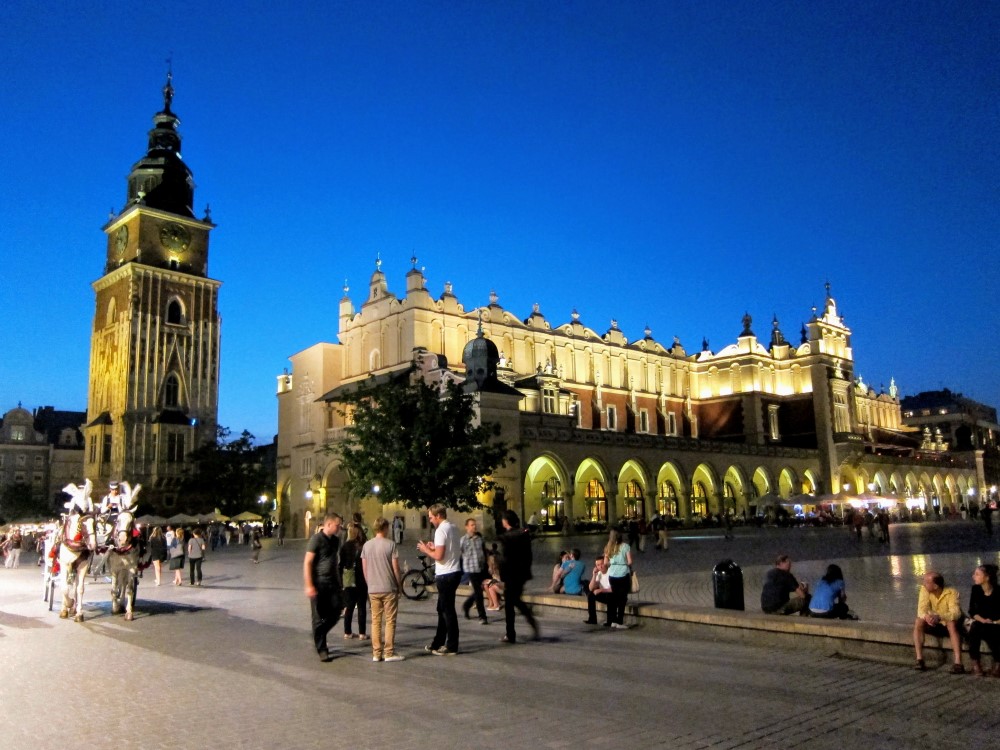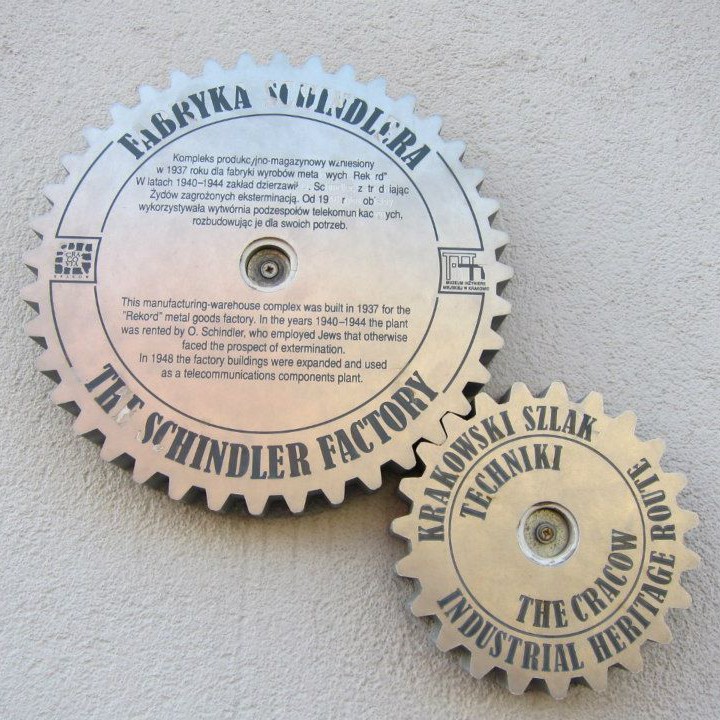Krakow Revisited
I was chuffed. Singapore‘s The Straits Times published my article describing my return to Krakow (Kraków), Poland last year. There were new attractions, like Oskar Schindler‘s enamelware factory. The Czartoryski Museum relocated the Leonardi da Vinci painting, Lady with an Ermine, to Wawel Castle. Many other sights also remained familiar to me. Now that it is no longer available online, here is the full article, updated for 2020:
MANY years had passed since my first visit to Krakow. Judging by the crowds that flocked to see Poland’s second city on my second trip here, it looks like it is now firmly on the sightseeing map, and it’s a well-deserved place too.
Krakow Old Town
A belt of trees runs around the old town, also known as Stare Miasto in Polish, and crossing this green lung feels like a step back in time. In this Unesco World Heritage Site, you leave behind the modern malls and hotels on the outside and enter a world with mediaeval buildings that look the way they did centuries ago. The city was fortunate to escape major damage during World War II.
The Market Square and Cloth Hall
The main market square is European’s largest, and its vast size comfortably accommodates the bars on its parameter, the artists that perform daily and the visitors who come to gawk or simply while their time away. The chatter of people and the strains of busking violinists contrast with the stillness of human statues mere metres away. A break-dancing group I saw on my previous visit still performs in front of the cloth hall that stands in the middle of the square, and it still pulls a sizeable crowd.
Even with all this activity going on, one tune continues to turn the heads of newcomers upwards, the hourly hejnal that is trumpeted from the towers of St Mary’s Basilica. It is hard to miss the melody which plays four times, always with the same abrupt ending. The interior of the church, with its high blue ceiling adorned with gold stars and the enormous gothic altarpiece, is a sight to behold.
Walking down the Royal Way, the street was lined with more buskers and people holding up signs advertising the small museums, tattoo parlours and beer gardens within the buildings. I passed several pretzel stands, saving my appetite for a familiar favourite on Grodzka Street, the Miod Malina. It serves hearty and decadent renditions of traditional Polish favourites like stews, dumplings, pancakes, meat and fish, at prices you wouldn’t expect at a Michelin-listed establishment.

Wawel Castle
After I was satiated, I continued my walk to the end of the Royal Way, where the sight of Wawel Royal Castle perched on the hill greeted me. Behind the fortified walls, the gold-topped cathedral, the palace and the ruins formed a beautiful backdrop for two newlywed couples that day. Children on a school trip spoke in hushed tones in the crypt of the cathedral, where they had come to see the final resting place of Poland’s kings, queens and national heroes.
Legend has it that Lord Shiva scattered seven chakra stones and one landed here. A few people stood near the corner of the courtyard near the entrance of the gallery, leaning against the wall with no intention of going in. I guessed they had heard about the legend and were trying to feel the energy of the stone.
The castle museum exhibits royal treasures, and due to the ongoing renovation of the Czartoryski Museum, it is also now home to Leonardo da Vinci’s “Lady With An Ermine”. I was excited to see the painting for the second time. Compared to Da Vinci’s Mona Lisa at the Louvre, visitors get more time and space to appreciate this masterpiece even during the peak tourist season.
Krakow’s ghetto
The Wawel Royal Castle overlooks the Vistula river, and on the other bank lies the district of Podgórze, Krakow’s ghetto during the war. This was where Steven Spielberg filmed his award-winning Schindler’s List. I took a tram ride and alighted right next to Ghetto Heroes Square. The empty bronze chairs scattered around are a sombre reminder of the deportations that took place there.
Oskar Schindler’s Factory
It takes less than ten minutes to walk to Oskar Schindler’s Enamel Factory, where he employed and housed more than a thousand Jews to save them from certain death in concentration camps. The building was converted into a museum with interactive exhibits that describe life in wartime Krakow. Tourists can stand in the spot where Liam Neeson who played Schindler’s character sends away a Jewish girl, or walk around the reconstruction of Schindler’s office and view the names of “Schindler Jews” on an installation. The factory stands as a powerful witness to man’s capacity for both altruism and evil.
As the sun set on my way back to the old town, the bars and cellars were lit up and the music grew louder. In the main square, street vendors launched illuminated toys towards the sky. This city still creates new pleasant memories and little surprises for a repeat visitor, and in my mind I was already planning for another return.
Krakow travel tips
Getting there
There are no direct flights to Krakow from Singapore. Those airlines that fly there from their hubs include Lufthansa (Frankfurt), Finnair (Helsinki, seasonal) and LOT Polish Airlines (Warsaw). From John Paul II International Airport, take bus #208, #292 or #902 (from 4 PLN) to the city centre. Trains also connect the Krakow Główny railway station to the capital Warsaw and other European cities such as Berlin, Hamburg, Vienna, Prague, Budapest, Lviv and Kiev.
Transport
Buses from the main bus station sometimes offer more direct services than trains to other Polish cities. From there, several companies also operate services to nearby destinations such as Wieliczka salt mine and the former Auschwitz-Birkenau concentration camp.
Eat
Poland does not readily come to mind as a culinary destination, but Polish dishes have their own rustic flavours. State-subsidised milk bars (bar mleczny) are budget-friendly places to sample the cuisine and these can be found in Krakow and other cities. Poland is famous for pierogi (dumplings filled with meat, potatoes and cheese or mushrooms that are boiled and then pan-fried in butter) and żurek (a soup made from sour rye, often served with meat and hard-boiled eggs).
General tips
English is widely understood and spoken in the city centre, at tourist attractions and by younger Poles. However, it is less commonly used in the surrounding suburbs. Don’t let that deter you from visiting places like the former Jewish neighbourhood of Kazimierz, the former Socialist town of Nowa Huta and Lagiewniki’s Divine Mercy Sanctuary.
Before Kraków, I was in Lublin; after that, I was in Wroclaw. Check out the stories behind the links!

20 Famous Landmarks Of Poland To Plan Your Travels Around! 🇵🇱
26/12/2020 @ 4:14 PM
[…] preserved as a reminder of the horrors of war. Many express bus services to the site run from Krakow’s main bus station, and the ride takes 1.5 hours. Entry is free, while the cost of joining a […]